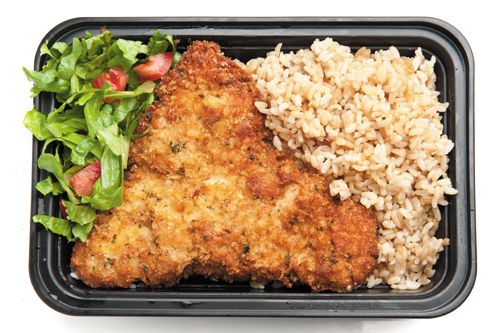GC–MS Uncovers Plastic Migration into Food
A group of researchers has studied the migration of monomers and plastic additives from plastic food packaging in microwave heated homemade food and packed liquid food using QuEChERS and gas chromatography coupled to mass spectrometry.
Photo Credit: Juanmonino/Getty Images

A group of researchers has studied the migration of monomers and plastic additives from plastic food packaging in microwave heated homemade food and packed liquid food using QuEChERS and gas chromatography coupled to mass spectrometry (GC–MS) (1).
Shop-bought food and beverages are the main source of plastic intake in the human diet. Lead author of the study Evelina Fasano from the University of Naples Federico II confirmed that this was an investigation ‘in order to preserve human health. In fact, the compounds that can migrate from packaging into food are usually endocrine disruptors.” A range of different polymers are used during plastic production depending on the specific characteristics of the food products, the storage conditions, and the shelf life. A number of factors can influence the migration of plasticizers to food including the chemical properties of the compound, the contact surface, the plastic material, the type of food, the packaging temperatures, the heat or sterilization treatment, and the storage time of the product.
The team analyzed a range of foods used in the preparation of food including pre-packed grated cheese, meat, fish, and vegetable broths, and white and red wine packed in a plastic laminate paperboard carton. They also prepared 11 homemade dishes of pasta, chicken, vegetables, rice, and seafood. These were cooked, cooled, and placed in microwave containers made from polypropylene and polycarbonate plastic. These courses were analyzed prior to microwave heating to compare any migration.
The compounds studied were 3 phthalates, 4-tert-octylphenol (OP), 4-nonylphenol (NP), bisphenol A (BPA), and di(2-ethylhexyl)adipate (DEHA). A QuEChERS-based method was optimized for the analysis of these compounds in the solid or liquid packed and retailed food mentioned earlier. Using GC–MS, recoveries ranged from 49 ± 16% (OP) to 130 ± 16% (BPA) and from 63 ± 22% (OP) to 127 ± 29% (NP) in solid and liquid foods, with limits of detection below 14.37 ng/g and 2.25 ng/mL, respectively. NP showed the highest mean level in homemade foods (1064 ± 363 ng/g wet weight) and reheating did not produce an increase in the levels detected. Phthalates and DEHA were detected at low concentrations. Results among liquid foods were variable. The mean concentration of NP in the meat broth was 9.61 ± 1.93 ng/mL, while butylbenzylphthalate in fish broth was 9.68 ± 1.75 ng/mL; in wine, the most abundant compound was diân-butylphthalate. The team concluded that the developed method was able to determine the presence of investigated chemicals in packed food, thereby allowing the evaluation of compounds that can affect food quality.
Reference
- Evelina Fasso et al., LWT - Food Science and Technology 64(2), 1015–1021 (2015).

Regulatory Deadlines and Supply Chain Challenges Take Center Stage in Nitrosamine Discussion
April 10th 2025During an LCGC International peer exchange, Aloka Srinivasan, Mayank Bhanti, and Amber Burch discussed the regulatory deadlines and supply chain challenges that come with nitrosamine analysis.










